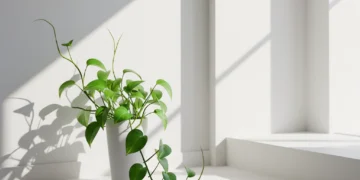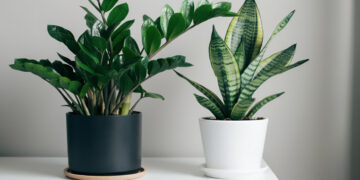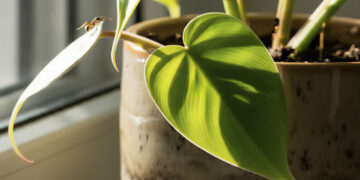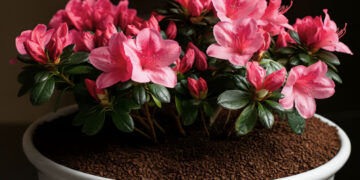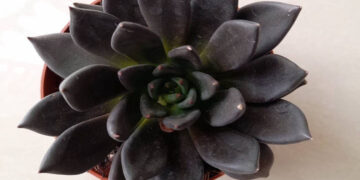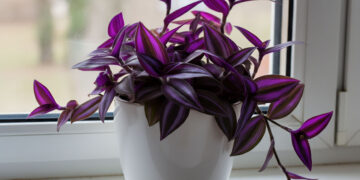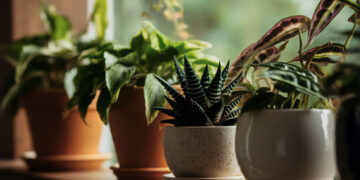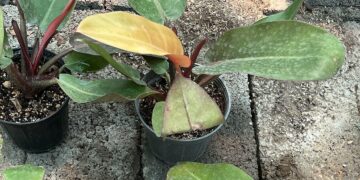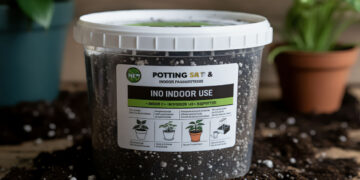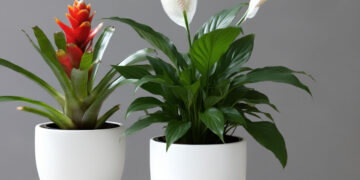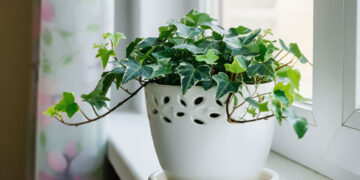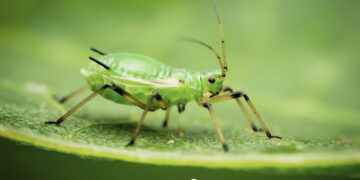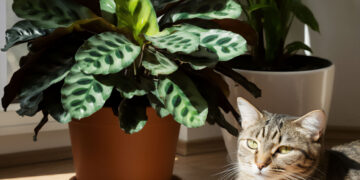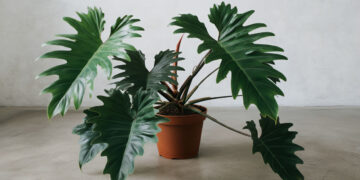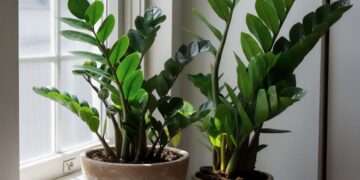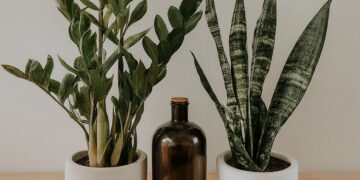If you’re looking to buy the best fertilizer for houseplants or want to use homemade and DIY fertilizer, I recommend knowing and checking these points first for the health and growth of your indoor plants.
The strange thing for me was that some people thought fertilizer was houseplant food. This idea is entirely wrong. The houseplant produces its food through photosynthesis, and we use fertilizer to enhance the houseplant.
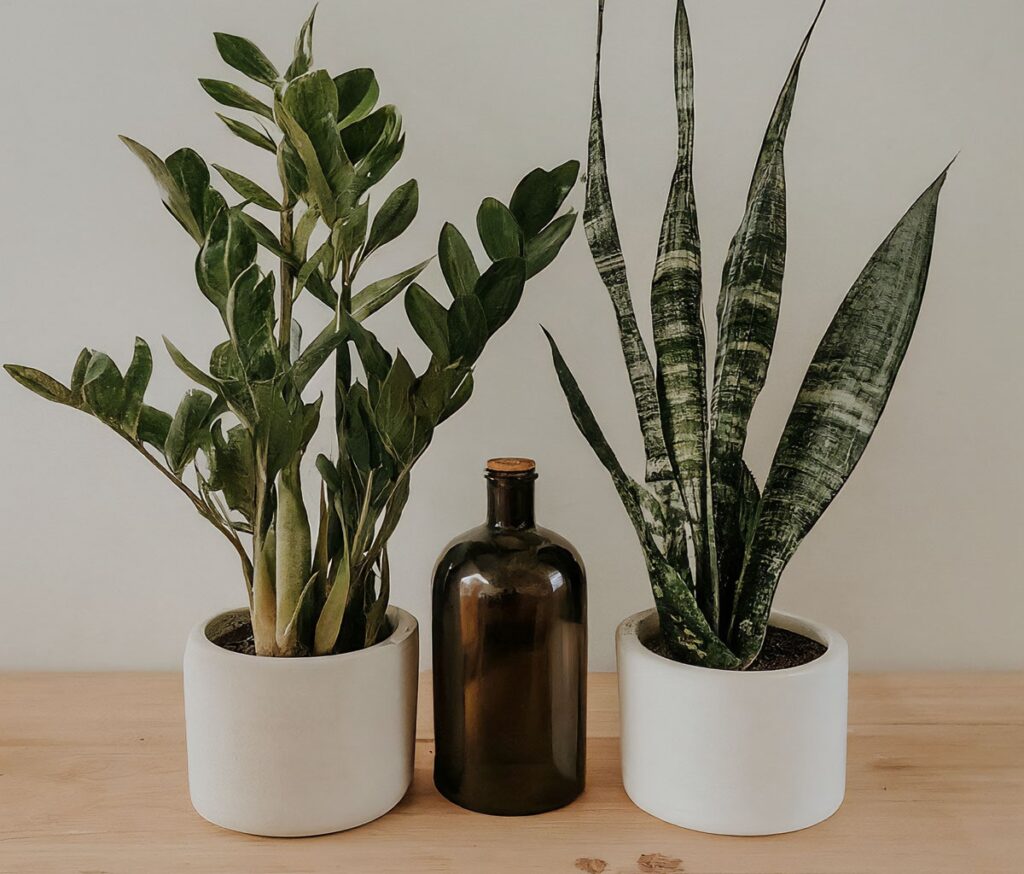
Essential Nutrients from fertilizers
Nitrogen (N), phosphorus (P) and potassium (K) are the three primary nutrients known as NPK, and each plays a vital role in houseplant growth.
Nitrogen can make the leaves grow more. Phosphorus helps the roots and flowers to grow, and potassium makes the houseplant resistant to diseases and ensures the health of the houseplant.
In addition, the houseplant needs secondary nutrients such as calcium, magnesium and sulfur as well as rare elements such as iron, manganese, zinc, copper, molybdenum and boron. You should buy a houseplant fertilizer with the right proportion of these nutrients.
The NPK ratio of general houseplant fertilizers is often balanced like 10-10-10 or 20-20-20.
Some houseplants need a specific ratio of NPK. Still, as far as I know, this equal ratio is suitable for most houseplants and provides all houseplant nutrients to grow leaves, roots and flowers.
Tip: Some fertilizers have beneficial microbes that help plants absorb nutrients well.
The frequency of fertilizing houseplants
In my opinion, depending on the growing season, the type of houseplant, and the type of fertilizer used, the number of times you fertilize the houseplant is different.
I start fertilizing a few weeks before spring to prepare the soil for the upcoming growth spurt.
During the growing season, i.e. spring and summer, fertilizing every two to four weeks is valuable.
In the inactive period means autumn and winter when growth slows, and fertilization decreases or stops completely.
Also, the type of houseplant is very effective. Some houseplants, like succulents and cacti, have different needs, and it is better to fertilize them after checking their needs.
Note: Always read the specific instructions on the package before using houseplant fertilizer and learn about the dosage, frequency of use and the correct method according to the fertilizer formula.
Types of Fertilizers and Application Methods
Liquid Fertilizers and quick results
When the houseplant needs frequent fertilization every 2 to 4 weeks, I use liquid fertilizers because they work quickly and are easy to use.
This houseplant fertilizer gives nutrients directly to the roots and is quickly absorbed.
For the dilution, accurately measure the fertilizer so that the houseplant does not suffer from over-fertilization. Then I mix it with water and give it to the houseplant when you are watering.
This houseplant fertilizer is also valuable when you want to adjust nutrient levels.
Granular Fertilizers and Long-term care
It is relatively easy to use granular fertilizer. Mix it thoroughly with the soil and renew it every 4 to 6 weeks. We use granola fertilizer less than liquid fertilizer.
This fertilizer is slow-release, and you don’t have to worry about houseplant nutrients for a while because this fertilizer provides nutrients for a long time.
Fertilizer Spikes
Spike fertilizer is one of the most popular fertilizers because it is easy to use and does not require care. This fertilizer enters the soil and releases nutrients slowly and continuously. Still, it does not expose the houseplant to over-fertilization.
Powdered fertilizers
Another type of fertilizer is powdered fertilizers with concentrated nutrients, which solve deficiencies or help with rapid growth stages.
You can easily measure and mix this fast enhancer. Dissolve the required amount of water and water the houseplant with the solution.
Over-fertilization of houseplants
It would be best if you kept the balance when fertilizing houseplants. Just as the lack of fertilizer harms the houseplant, fertilizing too much has some disadvantages.
Suppose you fertilize the houseplant without a plan and too much; the edges of the leaves on houseplant turn yellow or brown, the leaves fall, and you may see a white crust on the surface of the soil or around the edges of the pot. Also, you realize that the houseplant is no longer growing.
If you see these symptoms, stop fertilizing and wash the soil with water to remove extra nutrients and salts. So, check the houseplant and give fertilizer to it according to the schedule.
Note: If you water your houseplant before fertilizing, it will not get burned.
Soil type and fertilization of houseplants
The type of soil changes the fertilization needs of the houseplant. You should regularly test the soil’s nutrient levels to know how much fertilization the houseplant needs.
If the soil has high organic matter, it provides more nutrients and the frequency of fertilization will be reduced.
Sandy soils drain rapidly and need more fertilization.
Clay soils retain nutrients for extended periods but may cause nutrient buildup.
I would say that potting mixes with proper drainage are ideal for most houseplants. Still, they require regular fertilization to complete nutrients.
Water quality and houseplant fertilizers
Changing water quality can reduce or increase the effectiveness of houseplant fertilizers.
Tap water with chlorine, fluoride, or high salt interrupts the uptake of nutrients. So, if you water the houseplant with tap water, it will suffer from a deficiency or toxic buildup in the soil.
Distilled water or rainwater does not have tap water problems and provides a cleaner environment for absorbing nutrients.
Suppose you water the houseplant with hard water. In that case, the nutrient balance will be disturbed because this type of water is rich in minerals.
If you leave the tap water overnight, the chlorine will be destroyed, and it becomes suitable for watering.
PH levels and houseplant fertilizers
Most houseplants prefer a slightly acidic to neutral pH (6.0-7.0). Measure the pH range soil regularly with pH test kits and make the nutrients in the fertilizer readily available to the houseplants with appropriate amendments.
Light requirements and fertilization of houseplants
If your houseplant needs a lot of light, it will grow fast and require more fertilization. I give this type of houseplant a balanced fertilizer with high nitrogen content.
Meanwhile, low-light houseplants grow with milder and more balanced formulas to avoid over-fertilization.
Newly repotted plants and fertilization precautions
The repotting houseplant process puts the houseplant under pressure.
In my opinion, fresh houseplant potting mix has enough nutrients for initial growth. I usually wait at least 4 to 6 weeks to settle down and start growing. Then, I start fertilizing with a diluted fertilizer solution and gradually increase the concentration of the fertilizer to provide nutrients that will improve the health of the houseplant.
Tip: If you fertilize the plant too early, it may cause root burn or nutrient overload.
Special fertilizers for different steps of houseplant growth
I use a special fertilizer for each stage of houseplant growth.
In the growing step, using high-nitrogen fertilizers such as 30-10-10 to help the growth of leaves and stems is practical.
In the flowering stage, I use high phosphorus fertilizers such as 10-30-20 to make the best blooming houseplant.
Some fertilizers are designed for the rooting and seedling steps, with balanced nutrients that strengthen the root, which I haven’t used yet, but I’ve heard it’s beneficial. (I still have doubts about using it.)
What fertilizer for what plant?
best fertilizer for succulents
Succulents grow slowly and need little nutrients, too, so they need little fertilizer. I give them cactus juice and buy a balanced, low-nitrogen fertilizer like 2-7-7 to help them grow and retain water and prevent leggy growth.
If you don’t fertilize them in a balanced way, they will burn nutrients.
best fertilizer for tropical plants
For green, leafy tropical houseplant, I prefer a fertilizer with higher nitrogen levels for lush foliage, such as a 20-10-20 formula, and sometimes I give them a concentrated fertilizer as well.
They will suffer from leggy growth if they do not receive fertilizer regularly.
Please tell me the name of your houseplant, its health condition, its size, and the last time you fertilized it, along with the type of fertilizer you used. I will do my best to guide you.
Organic fertilizers in liquid Vs synthetic fertilizers in liquid
Organic liquid fertilizer is obtained from natural sources such as fish emulsion or seaweed. This environmentally friendly fertilizer slowly releases nutrients and improves soil health by increasing microbial activity. If you use this fertilizer, the possibility of suffering from over-fertilization is minimal.
Synthetic liquid fertilizers with precise NPK ratios are perfect for quickly boosting nutrients. But if you use too much, it leads to nutrient buildup and soil degradation.
Although both types of fertilizers guarantee houseplant growth and stability, I must say that organic fertilizers keep the soil healthy for a long time, but using artificial fertilizers is more accessible and results faster.
Benefits of using time-release fertilizers for houseplants
These fertilizers deliver nutrients to the houseplant slowly over several months. Therefore, you don’t need to fertilize the houseplant every once in a while, and don’t face with over-fertilizing.
These fertilizers are like fixed food for the houseplant and ensure similar growth and health.
Also, using these fertilizers is very easy and helpful for busy people and those with many houseplants.
Store different forms of fertilizer
Since I wouldn’t say I like shopping very much, the last time I went outside, I bought a lot of fertilizer and took care of it in the back workshop.
I keep the liquid fertilizers in a dry and cool place and avoid opening them before use so that the houseplant does not evaporate and is polluted.
I put the granular and powder fertilizers in a closed container so they are not lumpy or wet.
The fertilizer spikes are stored in the original packaging or similar containers to avoid losing its integrity.
Homemade and DIY Fertilizer for Houseplants
Banana peels
Do not throw out banana peel. Chop it. I usually bury it in the soil, but you can soak it in water, dry it, and make it into a powder to mix with the soil.
Banana peel is rich in potassium and improves root system and plant health. In addition, banana peels have small amounts of other nutrients, such as calcium and magnesium.
Aquarium water
Who would believe aquarium water contains fish waste, uneaten food, decomposed plant matter, and is a natural source of nitrogen, phosphorus, and other essential nutrients?
To enrich your soil and ensure the health of the houseplant, water the houseplant with used aquarium water. Make sure the water is clean. If the aquarium water is too dirty or polluted, it will harm the houseplants.
Worm castings
Worm casting or vermicompost is a very useful organic fertilizer rich in essential nutrients such as nitrogen, phosphorus and potassium, as well as beneficial microorganisms that improve soil health and structure.
Mix casting worms into potting soil or apply it as a top dressing.
It can increase soil aeration, conserve water and make nutrients available. It helps houseplants grow strongly and suppresses pests houseplants and diseases.
Fermented Plant Juice (FPJ)
Suppose you ferment grapes, nettles, or other nutrient-rich vegetables. In that case, you produce a liquid fertilizer rich in growth hormones and beneficial enzymes that can promote houseplant growth and health when diluted and used as a soil or foliar application.
Creating a balanced homemade fertilizer for houseplants
To make homemade fertilizer for houseplants, you must combine food-rich ingredients to provide essential macronutrients (NPK) and micronutrients.
I mix banana peel (potassium), eggshell (calcium), coffee grounds (nitrogen) and Epsom salt (magnesium) in the ratio needed by my houseplant and mix it in the soil or put it in water to make a liquid fertilizer.
Dangers of homemade fertilizer
If homemade fertilizers for houseplants have unsuitable nutrients, dangers such as nutrient imbalance, over-fertilization or the introduction of plant pathogens threaten the houseplant. For example, some materials, such as coffee grounds, can change the pH of the soil if used too much.
It is better to check the nutrients the houseplant needs first and then maintain a balance in their use.
Additional Handy Tips
Mycorrhiza to increase nutrient uptake
Mycorrhizal fungi are helpful fungi. Coexisting with the roots increases the accessibility of the root system and provides more nutrients and water to the houseplant. I usually add them to the fertilizer, but mycorrhiza products can be mixed with the soil or used as a soil wash in addition to regular fertilization.
Compost Tea as a Foliar Spray
In the past, we used compost tea for watering. Still, it is also helpful as a foliar spray, as it causes faster absorption of nutrients and increases the plant’s ability to fight diseases and pests. I usually spray this tea directly on the leaves.
Alfalfa Meal for Hormone Boost
One of the ways to increase the growth hormone is to add alfalfa meal to the fertilizer. Alfalfa contains triacontanol, which is considered a natural growth stimulant. You can mix alfalfa powder in the soil or put it in water and enjoy the impressive growth of the houseplant.
With this method, we have a constant power supply, which helps to set the soil moisture level, and the houseplant is prevented from being over-watered.
Innovative fertilizer delivery systems
With the development of technology, it has become easier to deliver fertilizer for houseplants. Systems like self-watering planters with built-in fertilizer reservoirs, nutrient-infused growing mediums, and precision drip watering systems release nutrients continuously and control and reduce the danger of over- or under-fertilization.
Smart fertilizers are also produced that release nutrients in response to soil moisture and temperature changes.
Hydroponically grown houseplants and houseplant fertilizers
Houseplants grown hydroponically also need fertilizer, but not just any fertilizer. I give them a special kind of fertilizer called hydroponic nutrients.
These fertilizers are designed to dissolve entirely in water and deliver essential nutrients directly to the roots.
In addition, they have a balanced NPK ratio, micronutrients, and pH stabilizers so that nutrient absorption and growth can be achieved well in a soilless environment.
sources:
https://hgic.clemson.edu/factsheet/choosing-a-fertilizer/
https://gardeningsolutions.ifas.ufl.edu/care/fertilizer/types-of-fertilizer/
